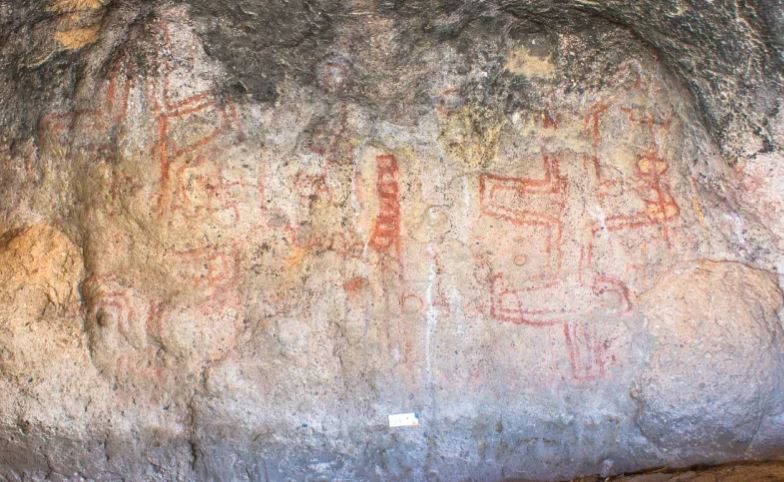Nestled amidst the rugged terrains of northwestern Patagonia, Argentina, lies a profound testament to human creativity and cultural continuity: the cave paintings of Cueva Huenul 1. Dating back an astonishing 8,200 years, these intricate designs offer a window into a rock art tradition that spanned over 3,000 years, ending around 5,100 years ago. Recently unveiled in Science Advances by archaeologist Guadalupe Romero Villanueva and her team, these artworks depict a rich tapestry of geometric shapes, cross-shaped lines, and figures of humans and guanacos—llama relatives significant to the region’s ancient inhabitants.
Unveiling Cultural Heritage
The discovery challenges previous assumptions about early South American populations, suggesting a vibrant cultural landscape much earlier than previously documented. Romero Villanueva’s meticulous radiocarbon dating of comblike depictions within Cueva Huenul 1 not only solidifies the antiquity of these paintings but also underscores their role in preserving ecological and ritual knowledge across generations of hunter-gatherer communities. Amidst a backdrop of sparse population and harsh environmental conditions, these paintings served as repositories of cultural heritage, offering insights into the beliefs and practices that shaped ancient life in Patagonia.
The Archaeological Context
Situated at an altitude of approximately 1,000 meters above sea level, Cueva Huenul 1 emerges as a critical archaeological site in a desert region that once hosted early human habitation. Excavations within the cave have uncovered not just paintings but also remnants of guanaco bones, indicating human presence as early as 11,700 years ago. This temporal layering—from initial habitation to the development of a cultural sanctuary—highlights the cave’s evolution from a utilitarian space to a sacred repository of knowledge, carefully etched onto its walls and ceilings by successive generations.
Scientific Significance
Romero Villanueva’s team’s use of advanced dating techniques, including radiocarbon analysis of pigment samples, marks a milestone in understanding the chronology of rock art in the Americas. These findings establish Cueva Huenul 1 as one of the oldest known examples of rock art in the region, preceding other significant discoveries by millennia. The meticulous attention to detail in dating specific paintings not only confirms their age but also places them within broader narratives of human creativity and cultural transmission across the continent.
Cultural Transmission and Symbolism
Beyond their chronological significance, the paintings offer glimpses into the symbolism and narrative traditions of early South American societies. The inclusion of guanaco figures—a keystone species in the region—suggests a profound ecological and possibly spiritual connection to the natural world. Each stroke of red pigment, carefully applied over generations, speaks to the intricate social dynamics and shared knowledge systems that sustained these communities amidst changing environmental pressures.
Summary Table:
| Key Learnings |
|---|
| – Discovery of Cueva Huenul 1’s cave paintings dating back 8,200 years in Patagonia. |
| – Insight into a rock art tradition spanning over 3,000 years, ending around 5,100 years ago. |
| – Role of paintings in preserving ecological and ritual knowledge among early South American hunter-gatherers. |
| – Scientific methods used to date and interpret ancient rock art in the Americas. |

Basant Kumar Sahoo is a seasoned writer with extensive experience in crafting tech-related articles, insightful editorials, and engaging sports content. With a deep understanding of technology trends, a knack for thought-provoking commentary, and a passion for sports, Basant brings a unique blend of expertise and creativity to his writing. His work is known for its clarity, depth, and ability to connect with readers across diverse topics.



